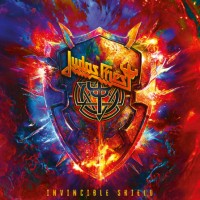Getting In2: Judas Priest

| Written by: | ScreamingSteelUS |
| Published: | 07.06.2019 |
The articles in this series are designed to give a brief overview of a band's entire discography, so as to provide a clear point of entry for the uninitiated. It offers a different approach from the typical review format for the curious newcomer to a well-traveled band.
Back in 2007, Baz Anderson, the originator of this series, published his own Getting Into: Judas Priest article. I'm not usually interested in duplicating effort, but that article is now three albums behind; I concluded that an update would not be uncalled for. Moreover, Baz and I have sufficiently different perspectives on Priest that I felt I would have some new things to say about certain albums (in other words, he was wrong). With that in mind, I welcome you to this second edition of Getting Into: Judas Priest.
Judas Priest
Heavy metal, hard rock, speed metal, glam metal, blues rock, symphonic metal
United Kingdom
When discussing the early history of heavy metal, the name Judas Priest comes second only to Black Sabbath. As one of the first bands to shed the baggage of late-'60s psychedelia and the legendary "heavy blues" mantle, and easily the band that enjoyed the most success while doing so, Judas Priest entered a world waiting for a tyrant to rule it. Rob Halford's inimitable, octave-spanning vocals and the dual lead guitars of Glenn Tipton and K.K. Downing set the band apart, as did the aggressive, groundbreaking songwriting that helped the newly minted heavy metal genre pull away from its roots and become its own beast; the band's introduction of leather and chains to its wardrobe helped shape the look of heavy metal, while its predilection for dark lyrical themes (and motorcycles) contributed further to the nascent aesthetic. With a list of classic albums that only grew longer with the passage of time, Priest rose to become one of the dominant forces in heavy music from one decade to the next. At present, the scope of Judas Priest's influence, the staying power of their iconic tracks, and their status as metal royalty are rivaled by only a handful of bands. But you know this already.
--
     | Rocka Rolla (1974) Rocka Rolla may be a bluesy rock and roll album rather than a heavy metal icon, but it's no pushover. Solid grooves and now-familiar twin guitar leads clearly prefigure the sound of Sad Wings Of Destiny. Label pressure reduced to smithereens much of the introspective jamming and instrumental meandering that were intended to fill space - perhaps oppressive oversight at the time, but ultimately beneficial to the album's style and longevity. Rocka Rolla's primary draws are its steely riffs and hard-edged rock swagger, preserved in proto-metal adventures like "Run Of The Mill." It's heavy, if not always heavy metal. Standout Tracks: "Run Of The Mill," "One For The Road," "Rocka Rolla" |
| Sad Wings Of Destiny (1976) One of the most significant albums in the development of heavy metal, Sad Wings Of Destiny ditches much of the language of contemporary heavy rock acts for a new approach to songwriting that was waiting to be explored. Though Rob Halford's sky-high screeches may have been learned from the likes of Ian Gillan, Robert Plant, and Freddie Mercury, Halford's own style took on a noticeably more sinister and metallic edge. His first high notes in "The Ripper" are downright evil, and if Sad Wings Of Destiny is one of the defining moments of heavy metal, the scream in "Victim Of Changes" is the defining moment of Sad Wings Of Destiny. The speed of "Deceiver," cackling madness of "The Ripper," and dramatic build of "Dreamer Deceiver" substantiate new ground broken on par with metal's true advent. Despite its reputation as a bold statement of early metal, Sad Wings Of Destiny does retain some influence from the band's early days of psychedelic blues and folk. "Epitaph," for example, makes for a passing Queen song, but sits oddly with "Tyrant" and "The Ripper," while "Island Of Domination" features some heavy blues swing. In retrospect, Sad Wings Of Destiny may not be the most cohesive album, but it would prove to be a stepping stone to bolder progress and its reputation remains undiminished. Standout Tracks: "Victim Of Changes," "The Ripper," "Tyrant," "Deceiver" |       |
     | Sin After Sin (1977) Brittle, Hammond-like guitars announce Sin After Sin as Judas Priest's most metallic release yet, bearing fruit from the possibilities raised by Sad Wings Of Destiny. Innovative use of double bass, high-speed riffing, and ever more daring guitar leads blazes a trail into unknown forms of loud, aggressive music. Sin After Sin's songwriting is neither as fluid and varied as that of Sad Wings Of Destiny nor as potent and heavy as what Stained Class would bring; "The Last Rose Of Summer" feels nothing short of anachronistic, and the lack of Sad Wings's dynamic production, especially the thundering bass guitar, makes for a more modest product. Yet "Sinner" and the cover of Joan Baez's "Diamonds And Rust" contributed much to the band's legendary status, and "Dissident Aggressor" was one of the heaviest songs of its day. Sin After Sin may not be as strong an album as those that bookend it, but it would prove as influential as any of the rest. Standout Tracks: "Dissident Aggressor," "Sinner," "Here Come The Tears," "Diamonds And Rust" |
| Stained Class (1978) Sharp, overdriven guitars give these songs a raw, factory-fresh sound that complements the further-refined riffing style: still slightly progressive, still slightly rocky in nature, but determinedly heavy in a way that previous albums foreshadowed more than embraced. Drummer Les Binks's technical, jazz-influenced playing makes Stained Class the most percussion-heavy Priest album to this point, while on the opposite end Halford's vocals are violent in the lows and ear-splitting in the highs like never before. Stained Class finally ditches the power ballads that slowed Sin After Sin and Sad Wings Of Destiny, committing instead to a bolder, more electric sound that makes Stained Class the most metal of Priest's 1970s catalogue; even "Beyond The Realms Of Death," a semi-acoustic, folk-influenced cut that is also the album's longest song, makes use of dark atmosphere and dynamic contrasts in a way previously achieved only by "Victim Of Changes." While Judas Priest would not stay with this style for much longer, they at least had the chance to perfect it before moving on. Standout Tracks: "Exciter," "Saints In Hell," "Beyond The Realms Of Death," "Savage" |       |
     | Killing Machine (1978) Killing Machine, known in the USA as Hell Bent For Leather, was Judas Priest's first step towards a commercial album. Though Killing Machine frequently matches the complexity and aggression of Stained Class's best tracks with its exceptional drumming and voracious power, other songs are noticeably oriented towards live performances, with choruses ready for audience participation and simplified riffs designed to catch the American airwaves. Halford's vocals are clearer and pushed closer to the front, encouraging the band's transition from wrathful to rollicking. Killing Machine unleashed a new Judas Priest: they had cultivated the street cred, technical chops, and confident attitude to launch a revolution, and at last they possessed the clean production and accessible songwriting to take the stadiums by storm. Standout Tracks: "Hell Bent For Leather," "Evening Star," "Delivering The Goods," "Killing Machine" |
| British Steel (1980) British Steel capitalizes on the success of Killing Machine's formula, implementing cleaner production and leaner songs whose facile riffs and unadventurous choruses made Priest capable of contending with any punk band for brevity. This strategy paid off: British Steel allowed Judas Priest to break into the mainstream and remains one of the band's most visible, most defining, and best-selling albums. In exchange, however, Priest sacrificed the grit and compositional ingenuity that keep earlier records engaging still today, and aside from the few classic anthems that helped propel Priest into the spotlight, British Steel largely fades into the background, better as a signpost of stardom than as an album in its own right. Halford's soaring, electrifying vocal lines are absent, replaced by straightforward, mid-range ones; the dueling lead guitars have been domesticated into mere power chords. Compared to "Dissident Aggressor," "Saints In Hell," and "Tyrant," "Living After Midnight" and "United" are downright soft; this is more of a solid, by-the-books hard rock album than a monumental metal classic like its predecessors. Standout Tracks: "Breaking The Law," "Metal Gods," "Rapid Fire," "Steeler" |     |
    | Point Of Entry (1981) Point Of Entry finds Judas Priest sunken into the radio-friendly bracket, plugging innocuous lyrical concepts into largely passionless filler tunes. The band's regression in heaviness and complexity culminates with this album, a prime example of what happens when artists cross a bridge too few; the single-oriented material doesn't hit the mark quite as well, while the paltry couple of strong metal tunes are outnumbered by a lot of glam rock aping that sits well below the threshold of Priest's capabilities. At least Judas Priest can make great driving music, which is what Point Of Entry is, if nothing else, but this album feels enervated and oppressive in its simplicity. Killing Machine and British Steel adopted a streamlined style for a particular purpose, but Point Of Entry seems pedestrian due to a pure lack of ideas. Standout Tracks: "Heading Out To The Highway," "On The Run," "Hot Rockin'" |
| Screaming For Vengeance (1982) As if in direct response to the bleak Point Of Entry, Screaming For Vengeance bristles with vitality, returning the dual-guitar battering rams and vicious vocal hooks to center stage. At long last, Priest found a way to lead the heavy metal pack as they had in the 1970s while simultaneously achieving the widespread palatability they had been aiming for. Announced by the iconic and devilish instrumental "The Hellion," Screaming For Vengeance ratchets up the speed and volume for a blend of arena rock panache and steely attitude, with a dash of menace for the heaviest tracks to keep the leather and chains in vogue. It is here that several of the band's most iconic tracks were born and the legend was secured for another generation of listeners. British Steel asked for fame; Point Of Entry apologized for the intrusion; Screaming For Vengeance took its stage by force. Standout Tracks: "Screaming For Vengeance," "Electric Eye," "You've Got Another Thing Coming," "Bloodstone" |       |
     | Defenders Of The Faith (1984) Of a mind with Screaming For Vengeance, Defenders Of The Faith executes the same confident mix of pop, metal, and attitude - though not quite to the same extent. On this album, Judas Priest once more began to fall prey to their commercial interests, not always exploiting them successfully. Heavy reverb on the drums, twangy glam rock riffs, and some lazy singalong choruses spoil an otherwise fearsome tapestry of metal optimized for both power and accessibility. By and large, however, Defenders Of The Faith does what its title suggests, allowing Judas Priest to keep its foothold on the global stage while remaining true to the stalwart reputation the band had earned. This album boasts as many classic Priest anthems as its predecessor, and it's not difficult to discern why the two are frequently mentioned in the same breath. Standout Tracks: "The Sentinel," "Jawbreaker," "Freewheel Burning," "Rock Hard Ride Free" |
| Turbo (1986) Turbo: the Judas Priest pop album. True, the guitars are loud and distorted, and Halford's voice is undeniably in beautiful shape; a few straggling licks and vocal lines could belong to any other Priest album. The trappings of heavy metal are deceptive, however, for this oft-maligned album contains mid-'80s rock radio fodder preserved in a light, almost jubilant tone and spit-shiny production. A short-lived fascination with guitar synthesizers further elevates Turbo into pop frippery, working in tandem with easy, repetitive choruses to create something more characteristic of the Sunset Strip than of past Priest. Turbo remains divisive - it can be enjoyable for what it is, like any elementary set of polished, crowd-friendly sound bites, but for a Judas Priest album, and the one that followed up Screaming For Vengeance and Defenders Of The Faith, it's hard to say that the animus is unjustified. Standout Tracks: "Out In The Cold," "Turbo Lover," "Locked In," "Private Property" |     |
     | Ram It Down (1988) The swells of energy rolling off this album overload the framework of hard rock-leaning metal, hinting at a band eager to broaden its creative vision from the milquetoast pop digest it had accidentally become too comfortable with. Halford opens the first three songs well into his upper register; the guitars and drums are drowning in distortion and reverb, but the songwriting darkens into the band's first taste of thrash, offering a promising counterpoint to the inextricable kitsch of quintessentially 1980s glam metal bangers like "Heavy Metal." "Hard As Iron" best exemplifies this album as a mixture of aggressive, breakneck verses and sequin-studded choruses and bridges. Ram It Down, too, has a fascination with synthesizers that continues to date the album and its style is a little too peculiar for its commercial ambitions, hence its ambivalent reception even now, but its bizarre electro-speed-glam style gives it an eccentricity worth sampling. Standout Tracks: "Ram It Down," "Blood Red Skies," "Hard As Iron," "Heavy Metal" |
| Painkiller (1990) Painkiller captures Judas Priest at its most intense: all speed, all volume, all power; a hurricane of screaming, shredding, and double bass. Fully absorbing the ferocity of thrash probed on Ram It Down, with a much rounder production, Painkiller rescues the appeal to the airwaves explored on the previous two albums by combining it with the resurgent heaviness of Screaming For Vengeance. The result is the high water mark of the traditional heavy metal genre: an album riddled with catchy melodies, driven by extreme rhythms, crowned by volcanic vocals, crackling with lightning solos. The synths are still a bit cheesy (hardly a problem with all men playing on 10). Just as hungry for an exciting chorus as any Priest album of the '80s, harvesting the onset of brutal extremes cropping up in new metal subgenres, Painkiller is the perfect summation of everything that Judas Priest - and traditional heavy metal itself - had ever striven for. Standout Tracks: "Painkiller," "Hell Patrol," "Leather Rebel," "One Shot At Glory" |       |
     | Jugulator (1997) With all the stylistic changes they had undergone in the previous 20+ years, Jugulator was still Judas Priest's greatest risk to date: the first album without Rob Halford. The story of Tim "Ripper" Owens's accession to the throne is a familiar one - how he was spotted fronting a Judas Priest tribute band by drummer Scott Travis's girlfriend, then found himself auditioning for the real thing - but less so is his first outing with the band, perhaps unfairly. Jugulator borrows the heavy distortion and percussion of Painkiller, but eschews the power-thrash frame and remnants of synthesized excess for something appropriately 1990s: groove. Painkiller's agility and hyperactive melody find themselves recast as bulky gut-punch riffs facing downward towards the rhythms rather than upwards at the melodies. Ripper's performance is hungry and exciting, the sign of a powerful frontman ready to make a name for himself. Jugulator's only real crime is its incongruity with the rest of Priest's catalogue up to that point (and perhaps some unenthusiastic production). Standout Tracks: "Cathedral Spires," "Bullet Train," "Death Row," "Blood Stained" |
| Demolition (2001) Grungy, groovy, tinny, and raw, Demolition channels Alice In Chains, Soundgarden, and Glenn Tipton's then-recent solo experiments into a collection of songs that are simultaneously darker and more vulnerable than what Jugulator offered. With much tighter, more consistent songwriting and better-tailored production, Demolition is already an improvement on its predecessor, but the more menacing and emotionally bare side that Judas Priest lays out through Ripper's frustrated snarls and coppery acoustics fits a lot better with the shattered image of the rock and metal scene of the late '90s and early 2000s. Demolition is a slow, bleak, and ugly album whose constituent parts don't always fit together well, and the image of Priest that it paints is even harder to reconcile with the Priest of the 1980s, but a number of dusky gems lie hidden behind its reputation. Standout Tracks: "In Between," "Hell Is Home," "Subterfuge," "Lost And Found" |      |
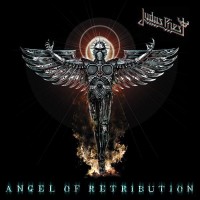     | Angel Of Retribution (2005) Fifteen years after their last studio album together, Rob Halford and the rest of Judas Priest reunited to much adulation. Few returns have been more triumphant and electrifying than "Judas Rising," but while that initial burst of energy proves that Priest had more than enough in the way of instrumental and vocal chops to hold up another classic album, a lot of time had passed since the last one. Highlights like "Revolution" and "Worth Fighting For" exhibit a heavy alt rock swagger more than the scorching energy of Painkiller, "Angel" marks the band's first proper ballad in ages, and the surrounding metal tracks feel slightly too conventional to have the same impact as the bombastic entrance. The closing epic, "Lochness," is an enchanting piece, but its 13-and-a-half-minute run time asks much more than it delivers. While Angel Of Retribution is easily Judas Priest's best record of the 2000s, this might be the one decade in which they could not be said to have released a masterpiece. Standout Tracks: "Judas Rising," "Demonizer," "Revolution," "Angel" |
| Nostradamus (2008) After a well-received reunion, Judas Priest opted to jump into the fray of experimentation once more, ditching the metal standards for Nostradamus, a double-disc concept album about the French reputed seer of the same name. A massive undertaking, Nostradamus could have been an exhausting failure, as its ambitions lie in adding an orchestra to the typical Priest palette, on top of the lengthy narrative - but to the band's credit, the songwriting evolves to embrace the style, offering more than simply bog-standard heavy metal cuts with strings and keys slapped over the choruses. Nostradamus was written as an orchestral album and utilizes the strengths of its instrumental variety. Priest's natural flair for theatricality profits from the bombast, eliciting interesting turns that could have been born only within such a project. The album's length is prodigious, possibly prohibitive, but Nostradamus houses a great quantity of inspired material that makes the album worth the dive. Standout Tracks: "Death," "Pestilence And Plague," "Future Of Mankind," "War" | 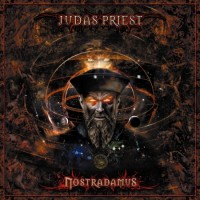     |
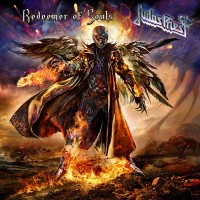    | Redeemer Of Souls (2014) Though many fans welcomed the return to a conventional heavy metal style, Redeemer Of Souls, the first album without K.K. Downing, seemed to herald hard times. An uncharacteristically weak Rob Halford hides in the mix, lacking any colorful vocal lines to exercise his range; drums mumble along at half-speed, struggling to keep a frustrating pace with the thin, imprecise guitars. The songwriting is incongruently decent, even strong, but the band sounds winded, dispassionate - and the production, a mess of mud and reverb, swallows up the sluggish performances. Drowning in the shadows of listlessness, Redeemer Of Souls forced the uncomfortable question: had Judas Priest finally gotten too old for this? Standout Tracks: "Redeemer Of Souls," "Halls Of Valhalla," "Battle Cry" |
| Firepower (2018) Judas Priest had not gotten too old for this. Firepower is a late-career classic from a band that had already had its late-career classic 28 years prior. Shedding all the malaise, all the guttering production, and every last scrap of age and disinterest that had accumulated over tumultuous years of uneven releases, Judas Priest achieved one more renaissance. Firepower is the most vital and bloodthirsty Priest album since Painkiller, polished and perfected with the expertise and energy that seemed lost to the years after the exhausted Redeemer Of Souls. Halford returns to his top vocal form with ageless power and hooks to spare, while the rest of the band behind him throws all its weight into bringing to life this smorgasbord of retro-flavored heavy metal: big choruses, savage riffs, double-bass in the undertow, and all the confidence a veteran band like Judas Priest is entitled to. Standout Tracks: "Spectre," "Firepower," "Never The Heroes," "Lightning Strike" | 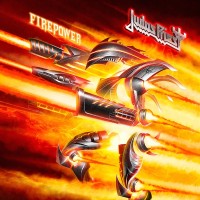      |
--
Overview
The last few years have been tough for Judas Priest. The legendary lead guitar duo sundered with K.K. Downing's departure in 2013; early 2018 brought the terrible news that Glenn Tipton had been struggling with Parkinson's disease for the last decade and would be, in effect, retiring. Some interpersonal drama has scarred the band in the midst of these trials. At this moment, though the efforts of Richie Faulkner and Andy Sneap have ensured that the band is not going guitar-less, the mortality of Judas Priest is becoming clearer than ever. But like the aging Clint Eastwood coming back for blood in Unforgiven, Priest have been able to give us one more earthshaking revelation in the form of Firepower, and for all we know, they're not done yet - they're still touring, at any rate. Whatever the immediate future holds for Judas Priest as a band, it seems certain that Judas Priest the legend will be remembered as one of the purest embodiments of heavy metal ever to rise from the earth.
 | Written on 07.06.2019 by I'm the reviewer, and that means my opinion is correct. |
Comments page 2 / 2
- 1
- 2
Comments: 34
Visited by: 183 users
| ScreamingSteelUS Editor-in-Chief |
| ManiacBlasphemer Black Knight |
| Valentin B Iconoclast |
| F3ynman2000 Nocturnal Bro |
- 1
- 2
Hits total: 4365 | This month: 27

